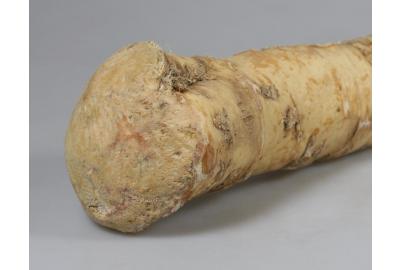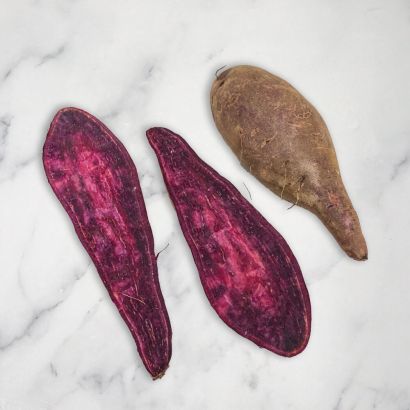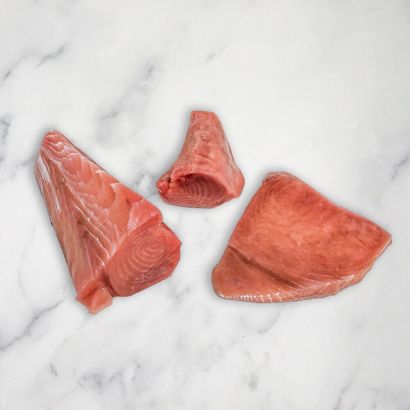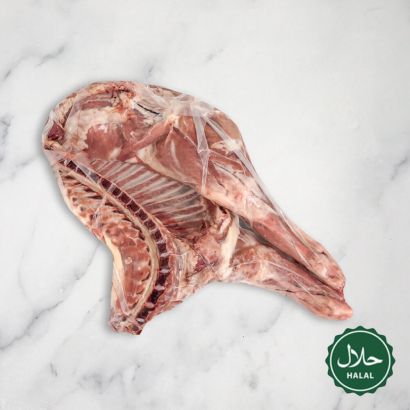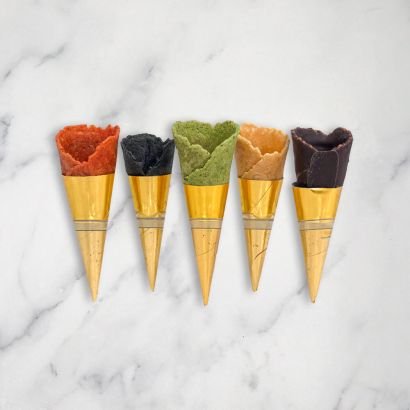Hot and fiery horseradish is a love-it or loathe-it ingredient. While many indulge in its rich heat, others find the heady mustard-like kick a step too far. For those who can’t get enough though, this root is so much more than just the perfect foil to roast beef. Horseradish is part of the brassicaceae family and shares genetics with mustard, wasabi, broccoli, radish and kale. Long and gnarly in shape, the flesh is creamy white and seemingly innocuous. Don’t be fooled though, this root has a knockout punch.
Why is horseradish so hot?
Even before a morsel has passed your lips, the moment it is sliced into you’ll know horseradish by its ability to reduce you to tears. Intact horseradish is harmless but the process of breaking down the cells by cutting into the root releases volatile oils known as isothiocyanates, which irritate the sinuses and eyes. The best advice we can give is to prepare horseradish in a well-ventilated room!
The isothiocyanates create the heat when they react with air or saliva. This reaction can be halted and the flavour stabilised by acids like vinegar so, when making a traditional horseradish sauce, the longer the grated root is left before adding acid, the hotter the final sauce will be.
A little horseradish history
With such arresting properties, it’s hardly surprising that horseradish has been used for its medicinal properties for millennia. There are Egyptian records of horseradish dating back to 1500BC and the Greeks revered the root; mythology recalls the Oracle of Delphi who told Apollo that “the radish is worth its weight in lead, the beet its weight in silver, the horseradish its weight in gold.” It is said to have cured everything from a tickly cough to back pain, rheumatism and even tuberculosis – no wonder it garnered such respect. It wasn’t until the 1500s that horseradish took hold in the UK.
It grew wild at first but was soon adopted into British culinary tradition. The botanical name for the root is cochlearia armoracia, which means ‘coarse’ or ‘rough radish’, but it was also known by other descriptive names like ‘redcole’ and ‘stingnose’. Today horseradish is still used as part of the Jewish Seder Service at Passover, where it represents bitter herbs, but is most prominently known for the way it complements roast beef.
Got leftovers? How to cook with horseradish
Aside from this classic pairing, horseradish is fantastic alongside oysters or oily fish like smoked mackerel or salmon, particularly when stirred with some lemon juice into crème fraîche or cream cheese to cool its fire. Add to mashed potato or a comforting stew for a little added depth or pep up a remoulade with a shaving or two. A whole root can be grated and stored in an airtight container in the fridge or freezer until you’re ready to use it. Where you would usually use mustard, try exchanging it for horseradish, either finely grated or prepared in vinegar. You may be surprised how versatile this feisty root is.
Our only caution: in hot dishes, add just before serving as cooking will destroy the flavour. Perhaps the best-loved application of horseradish at Fine Food Specialist is grated over a Bloody Mary; a cheeky kick to accompany Sunday morning brunch.

